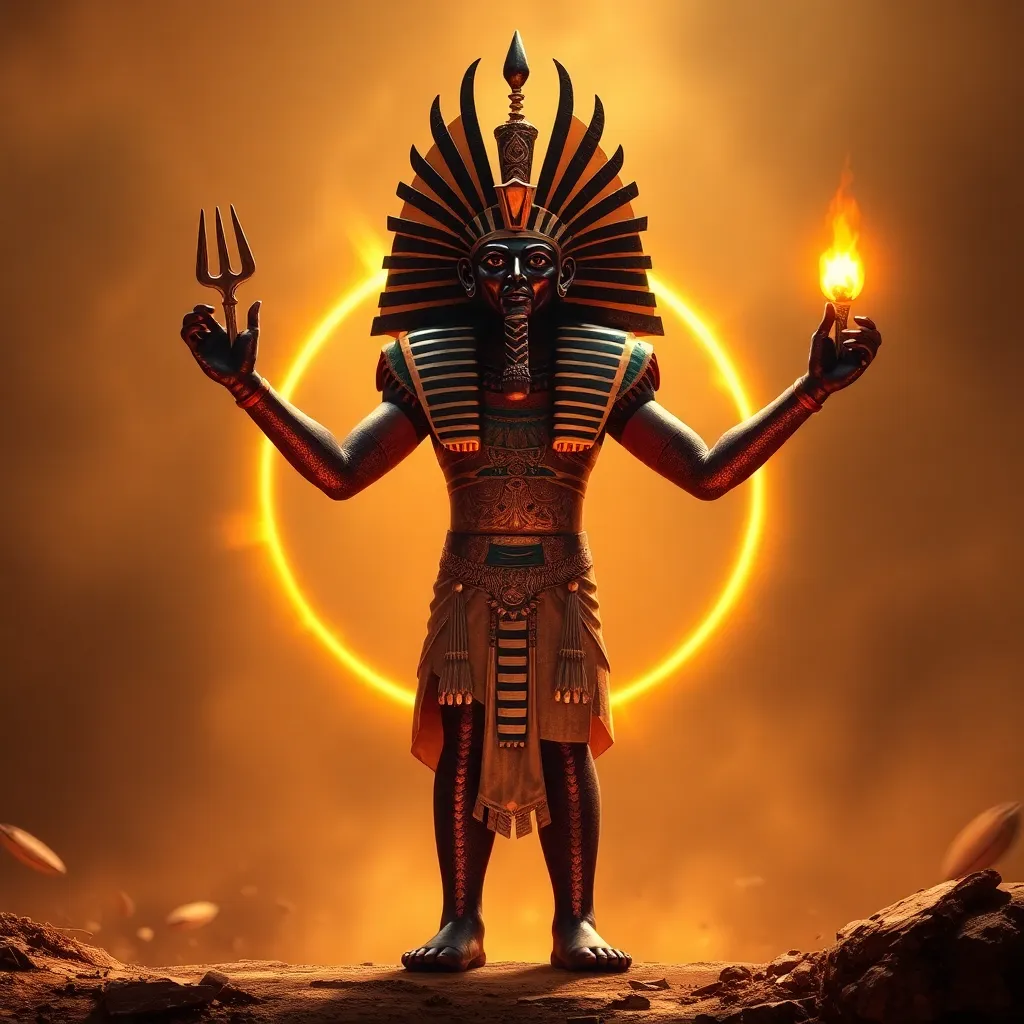The God of the Harvest: Osiris’s Rebirth and the Promise of Eternal Life
I. Introduction
Osiris is one of the most significant deities in Ancient Egyptian mythology, embodying the concepts of resurrection, fertility, and the afterlife. As the god of the harvest, he was intricately linked to the agricultural practices that sustained the civilization along the banks of the Nile River. The connection between Osiris, the harvest, and the afterlife illustrates how the ancient Egyptians viewed life, death, and rebirth as a cyclical process intertwined with the rhythms of nature.
II. Osiris: The God of the Harvest
Osiris’s origins are steeped in myth. He is often depicted as a green-skinned figure, symbolizing fertility and rebirth, adorned with white linen and a crown of feathers. His attributes include:
- The crook and flail, symbols of kingship and agricultural prosperity.
- The ankh, representing life and immortality.
- A scepter, signifying authority over the land and its bounty.
In the agricultural cycles of Ancient Egypt, Osiris played a pivotal role. He was believed to oversee the annual flooding of the Nile, which deposited nutrient-rich silt on the banks, allowing crops to flourish. This natural event was viewed as a manifestation of Osiris’s life-giving power.
As a deity of fertility and rebirth, Osiris was not only associated with the physical harvest but also symbolized the spiritual renewal that follows death, reflecting the dual nature of existence.
III. The Cycle of Life and Death in Agriculture
The seasonal changes in Egypt mirrored the myth of Osiris. The flooding of the Nile, which occurred every summer, was crucial for agricultural success. This cycle can be broken down into key phases:
- Flooding (Akhet): The Nile overflowed its banks, enriching the soil.
- Growing Season (Peret): Crops were planted and nurtured during the cooler months.
- Harvest (Shemu): The crops were gathered, symbolizing the bounty provided by Osiris.
Osiris’s influence was evident in agricultural practices, where rituals and offerings were made to ensure a successful harvest. Farmers would often pray to Osiris for protection against pests and diseases, reinforcing his role as a guardian of agriculture.
IV. The Myth of Osiris’s Death and Resurrection
The myth of Osiris’s death is one of the most famous tales in Egyptian mythology. According to the legend, Osiris was murdered by his jealous brother Seth, who dismembered his body and scattered the pieces across Egypt. This act of betrayal and violence led to despair among the gods and the people.
Isis, Osiris’s devoted wife and sister, played a crucial role in his resurrection. She searched for the scattered pieces, eventually finding and reassembling them. By using her magical powers, she was able to bring Osiris back to life. This resurrection not only symbolizes the cyclical nature of life and death but also represents the agricultural cycle, where death (the end of the harvest season) leads to new growth (the next planting season).
The symbolism of death and rebirth in agriculture is deeply rooted in the myth of Osiris, establishing him as a figure of hope and renewal for the ancient Egyptians.
V. Osiris and the Promise of Eternal Life
Beyond his role as a god of the harvest, Osiris is known as the judge of the dead. He presided over the weighing of the heart ceremony, where the deceased’s heart was measured against the feather of Ma’at, symbolizing truth and justice. This process determined whether a soul would enter the afterlife or face annihilation.
Osiris’s connection between agricultural abundance and the afterlife was profound. The belief that a bountiful harvest reflected divine favor reinforced the idea that living a virtuous life would lead to eternal life after death.
Rituals and beliefs surrounding Osiris included:
- Offering grains and fruits to Osiris during harvest festivals.
- Funeral rites that honored Osiris, emphasizing the hope for resurrection.
- Temples dedicated to Osiris, where the faithful would pray for agricultural success and eternal salvation.
VI. The Cult of Osiris in Ancient Egyptian Society
The cult of Osiris was central to Ancient Egyptian society, with numerous temples and centers of worship dedicated to him. Prominent sites included:
- The Temple of Osiris at Abydos, a significant pilgrimage site.
- The Osireion, a monumental structure symbolizing Osiris’s tomb.
- The Festival of Osiris, celebrated annually with grand processions and rituals.
Festivals celebrating Osiris’s rebirth were vibrant events that included feasting, music, and reenactments of his resurrection. These gatherings reinforced community bonds and collective identity, showcasing the deity’s influence on social and political structures.
VII. Osiris’s Legacy in Agriculture and Afterlife Beliefs
The impact of Osiris on Egyptian agricultural practices was lasting. His association with fertility and the harvest ensured that he remained a pivotal figure in the sustenance of society. The agricultural calendar revolved around his myth, influencing planting and harvesting cycles.
Osiris’s legacy extends beyond Ancient Egypt, as elements of his mythology were integrated into later religious traditions, including those of the Greeks and Romans. His narrative of death and rebirth resonates with themes found in many cultures, illustrating the universal human experience of life, death, and renewal.
VIII. Conclusion
In summary, Osiris’s significance in agriculture and the afterlife is profound, serving as a symbol of hope, fertility, and renewal. His myth encapsulates the cyclical nature of life and death, a theme that continues to resonate in contemporary culture. The enduring legacy of Osiris reflects humanity’s quest for understanding the mysteries of existence, where life, death, and rebirth intertwine in an eternal dance.




